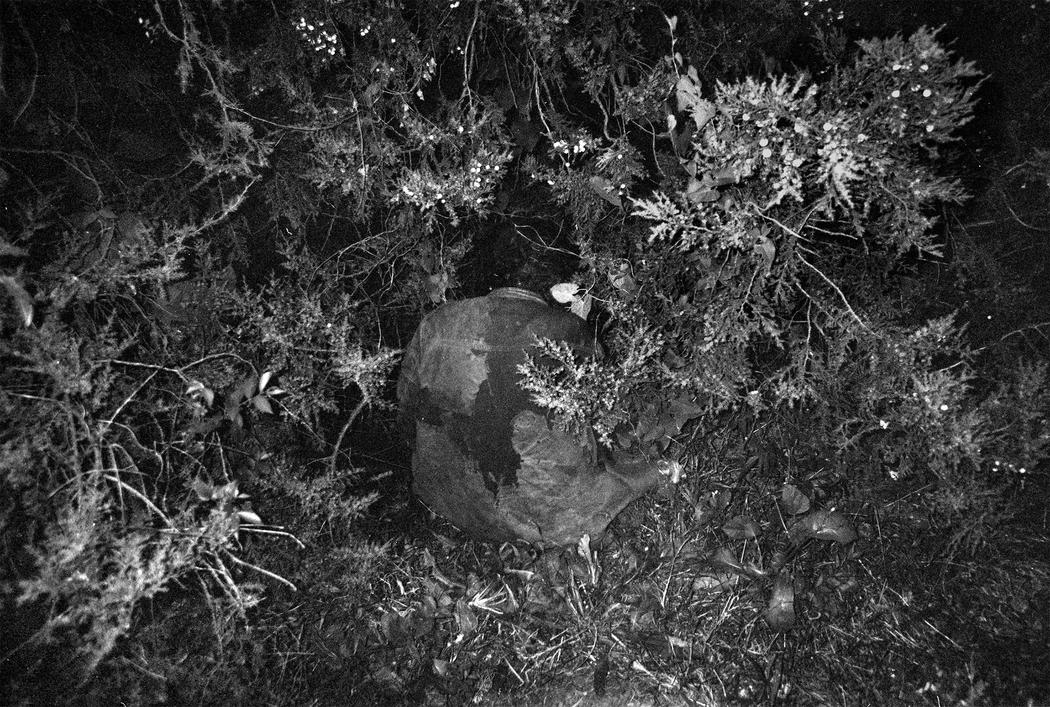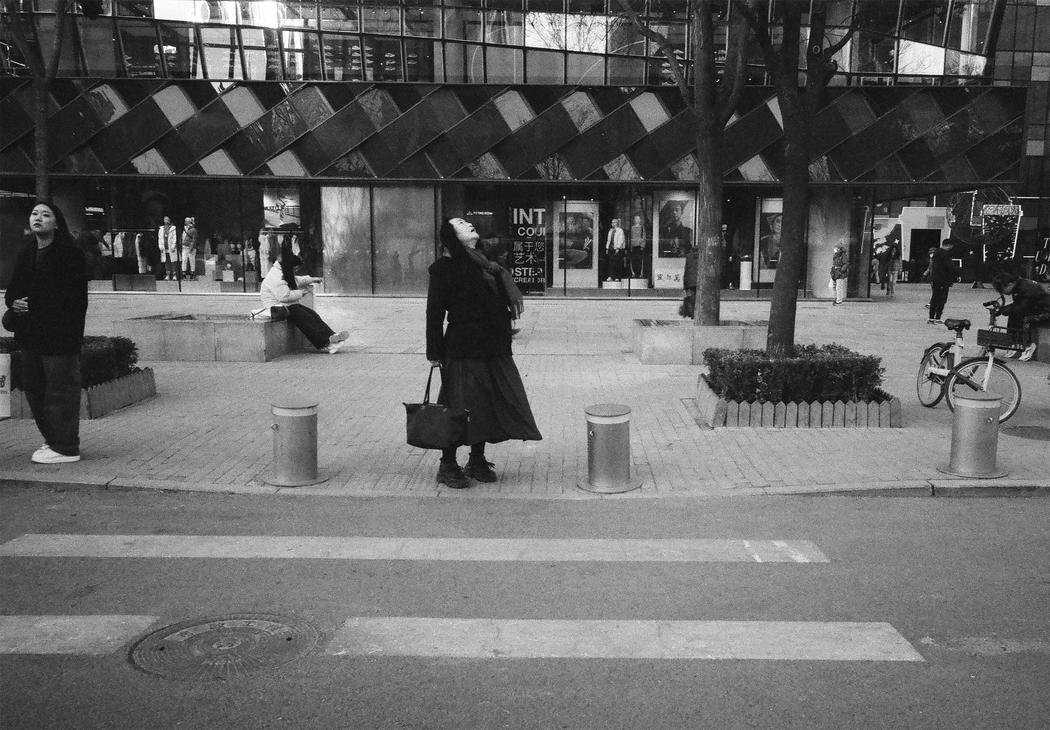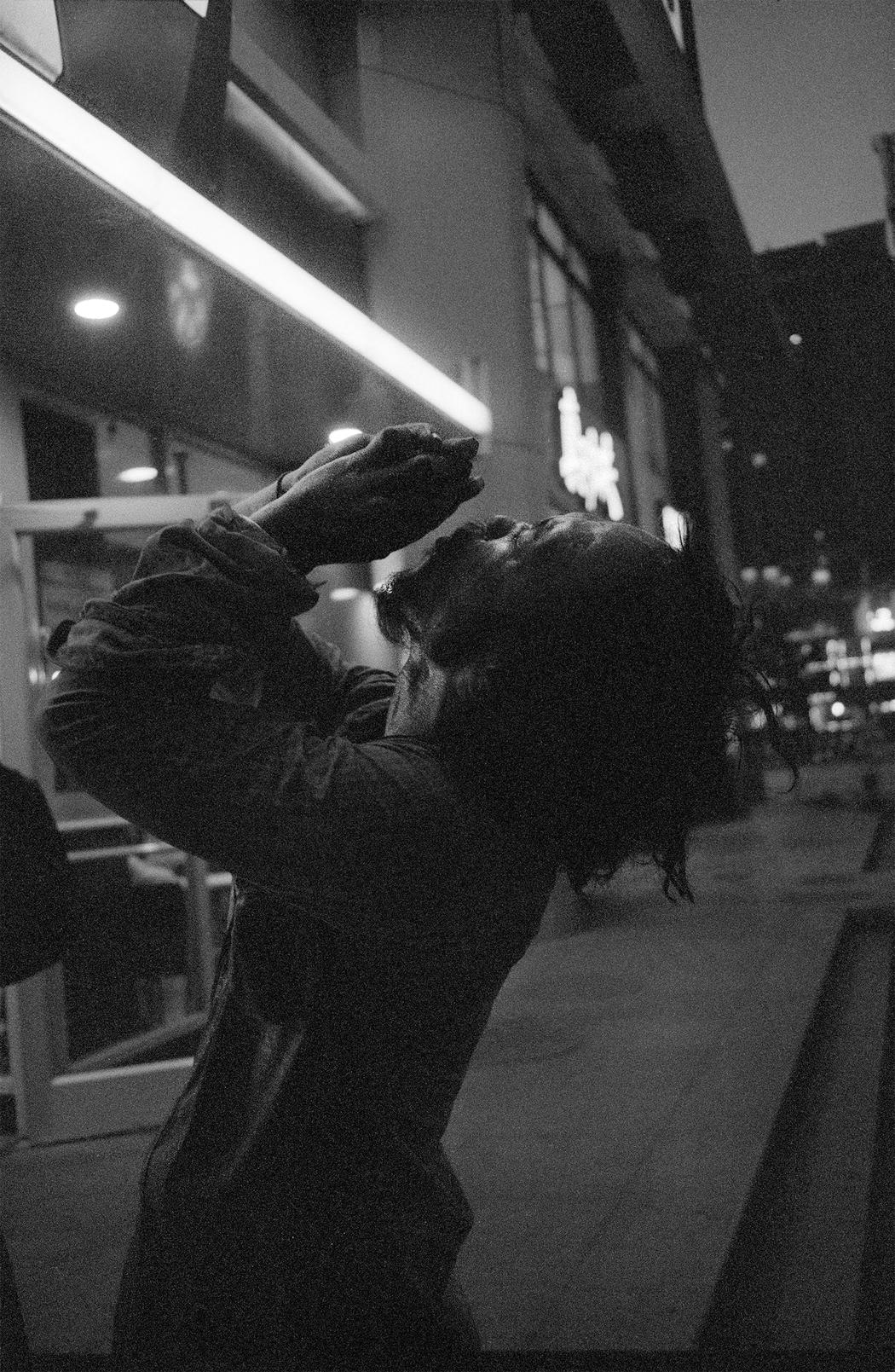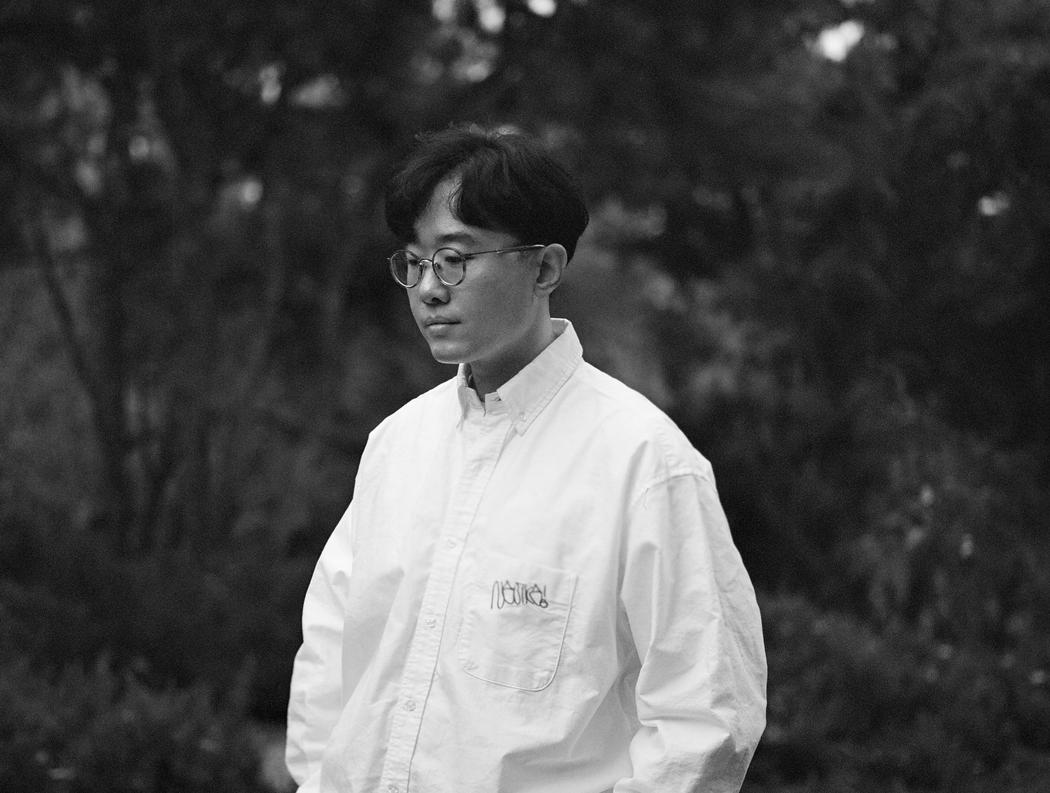ChengLong Zhang
Your project “Burning North” explores the relationship between individuals and urban space. What first inspired you to start this long-term project in Beijing?
I first came to Beijing in 2006, when I moved here from Shenyang in Northeast China to attend university. Although both Shenyang and Beijing are located in the north, the two cities have different characters. Shenyang is an industrial city with a strong sense of modern industry, while Beijing has a more simple and quiet ancient charm, with many places bearing historical traces. Beijing has a very convenient transportation system, featuring the earliest urban subway in China and a vast transportation hub. My initial impression was that it was a large city with a huge population and full of vitality. The journey from the train station to my university took over an hour. At that time, my school was outside the Fifth Ring Road, which was still a suburb. Such a long commute gave me a physical “dizziness” that I had never experienced before.
Before starting the “Burning North” project, I had been living in Beijing for nearly ten years. These ten years were crucial for my personal growth and also a period of rapid change for the city. More and more people moved into the city, bringing their ideals and aspirations to strive here. The city, like an organism, kept expanding and growing. People were changing the city, and the city was shaping its inhabitants. In the face of such rapid changes, how should individuals position themselves in the era, and what changes have we undergone? These thoughts began to emerge in my mind.
Around 2016, I happened to come across the photography book “Once” by German film director Wim Wenders. This book is Wenders’ philosophical reflection on photography, memory, travel, and “moments”. He combines film and still photography to tell a captivating story. The book records the roads and street scenes along the way, the people met during the journey, and the inquiries about the past and the present through photos and words. It builds an image world in the flow of physical space, which is consistent with the spirit of the project I wanted to create.
In 2017, I started this photography project. I felt that a rapidly changing era was coming to an end, and many changes had occurred around me. I thought I should do something. At first, I took the city as a field for investigation, observing and recording ordinary people like me who lived here, presenting it in a documentary form. However, I soon realized that the framework of film was too restrictive for capturing this grand and fluid urban narrative. The script text preceding the images would solidify the vivid images. When I looked at the photos taken for scouting locations for the film, I realized that photos might offer a more free space for expression. Creating a connection through photography might lead to a different kind of expression, which gave me some inspiration. Photography is a direct and rapid medium. It doesn’t require a large production team and allows me to create anytime and anywhere at a relatively low cost. More importantly, photos can present highly personal expressions in an instinctive way, which aligns with my desire to try something new. At the same time, it would also benefit my film creation. Gradually, I gave up shooting documentaries and focused on this photo series. As the shooting progressed, I was convinced that these photos should become an independent and powerful project.

You mentioned a dynamic balance between passive observation and active intervention. Can you describe how you approach this balance while shooting?э
The photographic practice of this project revolves around the delicate balance between “passive observation” and “active intervention”. “Passive observation” means that the camera first becomes a calm and restrained onlooker. This way of seeing is inspired by the aesthetics of “Direct Cinema” and “Cinéma Vérité” in the late 1950s. I try my best not to disturb the subjects, allowing the lens to quietly wait and capture those genuine moments hidden in daily life and the most original, unadorned states of people. I always believe that truth does not lie in grand narratives but is hidden in people’s daily behaviors and emotions – those accidental and impromptu moments often get closer to the essence of reality, embracing the accidental and the spontaneous. “Active intervention”, on the other hand, is another path to deeper truth. This approach continues the viewpoint of “Cinéma Vérité”: the presence of the creator, even if it’s just limited interaction, is enough to open up a structural reality. I will actively choose a certain moment, a certain person, or a certain space to enter. Sometimes it’s triggered by intuition, and sometimes it’s a premonition of what’s about to happen. My intervention is not to hide, but precisely through my presence, to trigger, evoke, and break a certain mood and atmosphere. This behavior is more like “triggering” or “sculpting” a moment, making it more expressive and directional.
What I pursue is not just the surface of events, but to make the photos present a sense of documentary while carrying my thoughts and intentions. The two are not opposed but rather a fluid, mutually penetrating relationship. They alternately act in my works, re-generating a reality belonging to the image between documentation and construction.
I remember during one of my shoots, I came across a person. It was a place I often visited, and this person was also frequently seen there. But before that day, I had never thought of taking his picture. That day, he seemed to have changed. My intuition told me that I could get a good shot of him today. I observed him for a long time, and he eventually noticed my presence. I deliberately kept a certain distance from him so that he would ignore me. After half an hour, he made a gesture. I rushed forward and snapped a photo. Since then, I have never seen him there again.

Your images feel cinematic and emotionally charged. How has your background in filmmaking influenced your photographic style?
Your observation is very accurate. My photography style is related to my educational background, especially my experiences in drama performance and film production. I was interested in art when I was in junior high school. At the age of sixteen, I studied drama performance at an art high school in Shenyang. The three years of drama study set my life goal. At that time, I performed and read some of Shakespeare’s plays and Chinese classical dramas. The core of drama performance is to express complex human emotions and inner conflicts on stage through the language, body, and expressions of the actors. Observing life is a compulsory course for every actor. This experience trained my sensitivity and insight into people. Although I didn’t become an actor in the end, the three years of stage performance training became the foundation of my future creation.
Later, I was admitted to the School of Photography and Television of Communication University of China. Although it was a photography major, we had a lot of film director courses. During this period, I watched about two thousand domestic and foreign films and some literary works, mainly Chinese short stories and novellas. I think these learning experiences broadened my artistic vision. The background of film production helped me unify the narrative rhythm of my photos, the way of editing photos, and influenced my way of observing and capturing the world. When I started this project, it was very natural for me to incorporate the narrative thinking of films and organize the sequence of photos in a story-like way. However, static photography is not the same as film. Photos have their own system. First, I must follow this system, and then my personal experience. From the perspective of photography itself, it is a static image. Compared with the flowing real world, in a static image, space is zero and time is infinite. This means that if a photo lacks vivid content, it can easily become boring. It needs to attract the viewer’s eyes and stand up to repeated scrutiny. So I often think about whether it is possible to capture photos with emotional content to achieve this. This is actually rooted in my background in drama performance and film production. Expressing real or private human emotions in images, I think such images are touching and can touch people’s hearts.

How do you choose your subjects or scenes in the city? Are they spontaneous encounters or planned explorations?
This is a result of a combination of chance and planning. The underlying logic is based on “photogenicity”. This might sound a bit theoretical, but simply put, it refers to certain subjects and scenes that inherently possess a certain quality that makes them particularly eye-catching under the lens, and they naturally have an appeal in the frame. Based on this principle, I wander around the city, keeping myself highly present and having a clear mind in the face of complex environments, receiving information from daily life with an open attitude. If photography is an adventure, this is the way I can encounter more interesting souls. Sometimes I also actively ask if I can take a photo. This photo may not be suitable for this project, but it might offer me another perspective or be used in a new project. Capturing fleeting moments is one of the charming traits of the medium of photography. The modern Chinese poet Xu Zhimo wrote a poem called “Casual Encounter”.
I am but a cloud in the sky,
Casting a fleeting shadow on the heart of your still water.
You need not be surprised,
Nor should you rejoice —
In an instant, I will vanish without a trace.
If you and I meet upon the dark sea,
You have your direction, and I have mine.
It’s fine if you remember,
But better if you forget
The light we exchanged in that moment of meeting!
This poem expresses the contingency and transience of human encounters, reflecting through the span of a hundred years on a certain predicament in modern interpersonal relationships.
Meanwhile, “Burning North” as a long-term photography project spanning several years, the initial idea has been constantly evolving. A single approach is not enough to make it more profound. It requires purposeful and strategic exploration in both form and content, which is also an important part of the project. However, no matter what ideas and plans I have, they must be feasible. That is to say, I must complete my project within the framework of the characteristics of Beijing. There are some differences in the human and urban landscapes of different areas in Beijing. I will consciously choose subjects or revisit certain scenes based on the theme of the project and my pursuit of visual style. To improve efficiency, I usually plan my route for the day in advance; once I arrive at the planned area, no matter how the situation is, I will not change the area, because this means spending more time and energy on the road. During the project’s progress, I constantly ask myself new questions. The accumulation of these visual elements can constantly reconstruct my original ideas. Some are deepened, some deviate from the theme, and they all expand the boundaries of the project in various forms. Eventually, through these images, a deep interactive relationship between me and the city is gradually established.
What role does weather or time of day play in shaping the emotional atmosphere of your photographs?
For the time of day, I hope it is not merely a background in my images, but can enhance the emotional impact of the photos in a creative way. Beijing is a fast-paced city, and people’s living and working times have their regularity. During the day, I choose to shoot when people are traveling the most, during the morning and evening rush hours. People are in a hurry then, and this creates a sense of urbanity in the photos. On the other hand, in my black-and-white works, the specific time of day is usually not emphasized. It becomes an internalized, unobtrusive presence. This stems from my understanding of the abstract and symbolic nature of black-and-white photos. They strip away the specific colors of the real world, and the time in the photos no longer points to a precise physical moment. It tends to be presented in an emotional and philosophical way, visually echoing the inner sense of time of the subject. At the same time, time is a very important fulcrum in all art forms. In my photos, it connects the narrative and emotional flow. At the end of the French film “The 400 Blows”, the image of the boy running towards the sea suddenly freezes, and the film ends. The boy seems to be trapped forever on the beach, frozen in time. The frozen image here disrupts the continuity of the image but generates meaning and has some philosophical implications. Static images have an eternal quality. When people are frozen at a certain point in time to become a photo, this moment becomes symbolic, pointing to the continuous and cyclical state of human existence.
Weather is also an important emotional symbol in photos. In our life experience, different weather can affect people’s moods. It is a projection of psychological states and can add a mysterious atmosphere to the photos. Just like the documentary “Rain” directed by Dutch filmmaker Joris Ivens in 1929, a sudden downpour changed the spatial appearance of Amsterdam. The city instantly became strange. Weather became the protagonist in a film, with such great power that it cannot be ignored as an important element. I hope that rainy or snowy weather in my photos can create a surreal feeling and stimulate the energy of the characters or scenes in the picture.

Some of your photos have a sense of solitude or quiet intensity. Are you consciously drawn to these moods, or do they emerge naturally in your work?
The tone of this project may stem from my personal life experiences and long-term observations of urban life. I spent almost my entire life from birth to adulthood in cities, and cities have shaped a part of me. As an only child, I often spent my childhood and adolescence alone, getting used to observing the things around me and always being curious about what others take for granted. So subconsciously, I am drawn to those who are immersed in their own worlds. At certain moments, these people seem more like they are lost in their own time. Chinese emotions are often calm and reserved, which perhaps explains why my photos give a sense of serenity. People often wear social masks, and behind this serenity lies the subtle and multi-layered relationship between modern people and cities in an Eastern context.
In the city where I live, interactions in public spaces are far less intense than those in classic street photography. People are more like a group of individuals with similar traits, bustling about in the city. In a metropolis like Beijing with a population of over 20 million, countless people come and go with their dreams and worries. When I focus my lens on specific individuals and see the developed photos, I do feel a sense of loneliness. This might be a common portrayal of the relationship between individuals and cities in the process of modern urbanization. We enjoy the conveniences of the city, but at the same time, the rapid development of the information age is changing the way people communicate. This is not my personal visual diary. I need to maintain sufficient patience to reveal the complexity of life. These photos are not just about Beijing; they are universal, reflecting the alienation and loneliness that exist in every city around the world.
Therefore, I hope that the photos can engage in a dialogue with the viewers, allowing them to interpret freely. When the interpretation goes beyond my original intention and resonates in the hearts of different viewers, evoking their unique feelings, the vitality of the photos truly comes to life.
What does “the other side of reality” mean to you, and how does photography help you reach it?
Reality usually refers to what we see in our daily lives, the physical world that we can perceive, and it is the common experience we share in the same time and space dimension. However, for me, the other side of reality is a deeper and more essential state hidden beneath the surface of our daily lives. It concerns the truth of life and the ancient and sacred things.
We live in a multi-dimensional parallel world. Time and space confine us to a certain corner of the earth, and we are shaped by what we see around us. But in the vast universe, there are so many unknown things. I no longer just chase after what is clearly visible, but rather, when certain secrets come, I can recognize them.
The world rushes past before my eyes, and nothing can be explained. Photography helps me retain some fragments. I want to construct a world through images, a world that is both familiar and strange, a world with things that can be recognized without thinking and clues that can trigger thoughts and imagination, a world with emotions that can be confirmed and poetic feelings that are hard to describe. This world is both old and new. I invite the audience to enter and hope they can see and feel all of this.
When I was 17 years old, I performed on stage for the first time. When I entered a role and began a story, the feeling of entering another time and space was so wonderful. So many people were watching me from below the stage, and I was looking at them. These two times and spaces were isolated from each other yet intertwined. Reality was turning its face here.
Many years later, whenever I walk through the city, I still feel that “dizziness”. Perhaps it is the physical memory of my exhaustion and the uncertainty of the future when I stand at a certain place in the vast world. I have become accustomed to its existence. Even though it might leave me one day, I am still grateful. It reminds me in a unique way of the limitations and smallness of being human, and life will eventually push me towards another beginning. Arriving is not the end; it is life’s call for me to explore the unknown world again.


Leave a Reply
You must be logged in to post a comment.